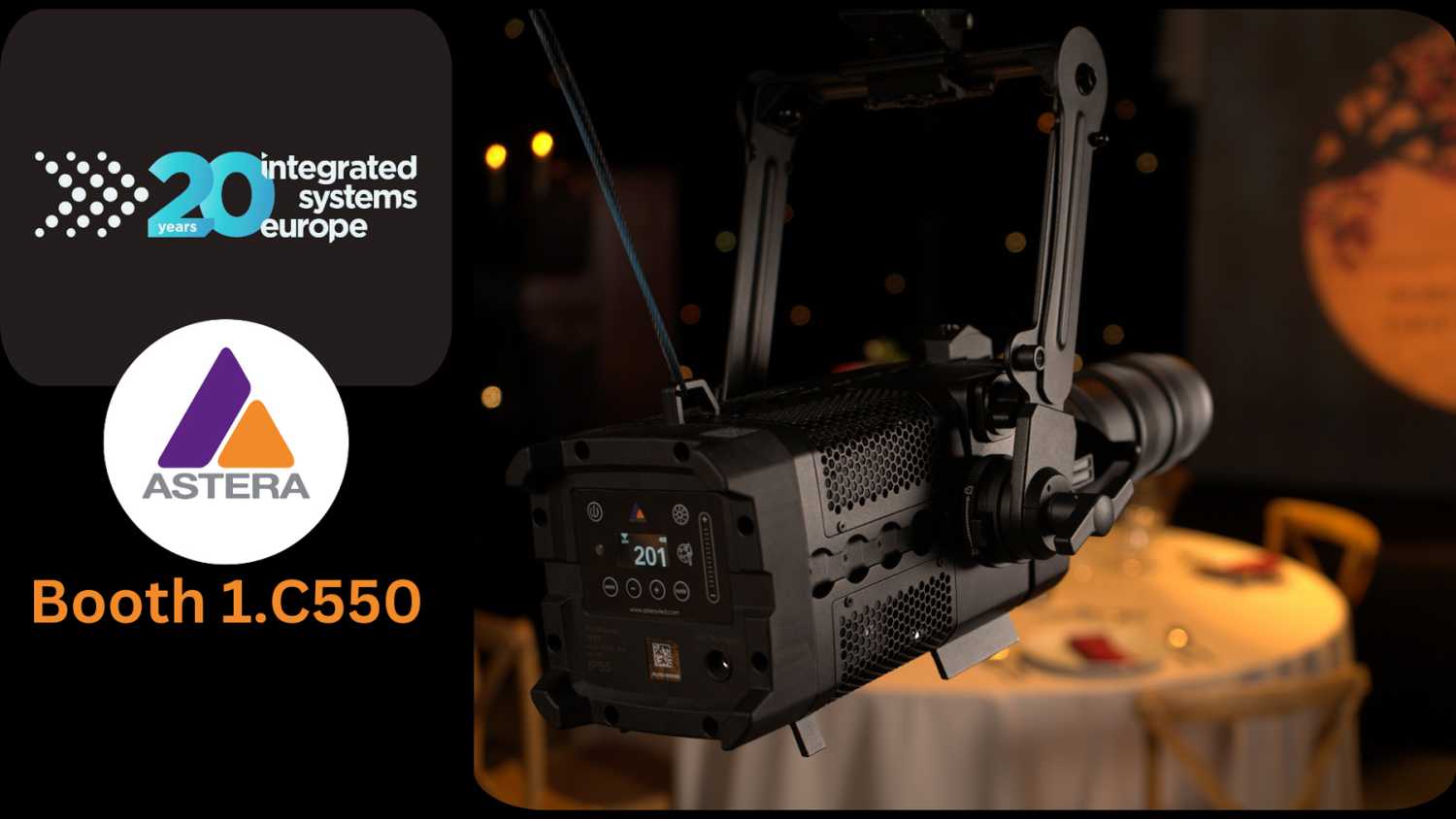ISE 2024: Astera ecosystem grows
- Details

By providing LED versions of the key traditional lighting types used most frequently by gaffers, and by integrating built-in batteries, Astera are able to leverage all of the advantages of LED technology - including lower power draw, higher output strength, precise colour control, lightweight profile, wireless installation and full creative flexibility.
The newest additions to this full lighting ecosystem are the LeoFresnel and PlutoFresnel. With both lights maintaining a Beam Angle between 15° and 60°, and with the PlutoFresnel achieving the equivalent of a 300W Tungsten Fresnel for an 80W draw whilst the LeoFresnel achieves an equivalent output of 1000W using only 250W, both lights can be used to achieve the specific creative effects associated with Fresnels - particularly in terms of documentary work - whilst avoiding the weight, heat and energy-draw associated with conventional lights.
A new addition to the PlutoFresnel allows it to quickly transform into a battery-powered profile spotlight, with a range of 16° to 36°. The lenses can be exchanged in seconds; they simply slip in and out, and the projection zoom can then be controlled manually by twisting the lens barrel. Two further focus wheels allow for standard and macro focus, and an E-size Gobo holder allows for custom logo projection. This new ‘Fresnel to Profile’ technology furthers Astera’s commitment to creating lighting that is versatile and efficient, in terms of workflow, energy draw and space/weight concerns.
The flexible LeoFresnel and PlutoFresnel - along with the new projection addition - join Astera’s established selection of Tubes, PixelBrick, AX9, AX5, AX2 and HydraPanel.
At the heart of this complete lighting ecosystem sits the Titan LED engine, which powers the lights and ensures absolute colour fidelity and lighting consistency, across a 1,750 to 20,000 Kelvin range and with Full Spectrum RGB+Mint+Amber colour. Most importantly, the use of a coordinated engine across the lights means that any number of different Astera products can be easily coordinated to produce seamless lighting on any set, linking groups of lights wirelessly to facilitate quick setup and instant alteration.
Gaffers are provided with full control and flexibility in their workflow, able to operate the lights using Wireless DMX, CRMX or BluetoothBridge connectivity. This in turn provides control either through Astera’s intuitive App, or alternatively the newly released ‘White Remote’, which compliments the existing ‘FX remote’ to allow lighting engineers at-a-click control over their lights, either individually or as a collective group.
Sebastian Bückle - sales and marketing director for Astera said: “The pace of development within Astera means that we are quickly becoming a ‘one-stop-shop’ for lighting professionals who want full creative flexibility, but also recognise that LED technology can bring unrivalled benefits in terms of logistics and practicality.
“An increasing number of top-level lighting professionals have openly declared their support for the Astera range this year - referring specifically to its ‘ecosystem’ nature - and we will be able to use ISE to discuss with clients a range of applied case-studies which have made use of a full Astera ecosystem - many of which are household-name TV& Film productions and mostly event companies.”
















